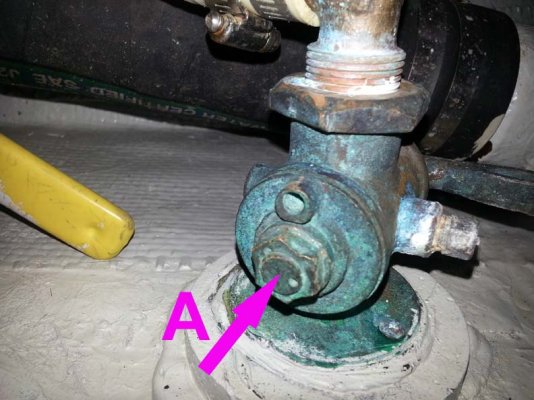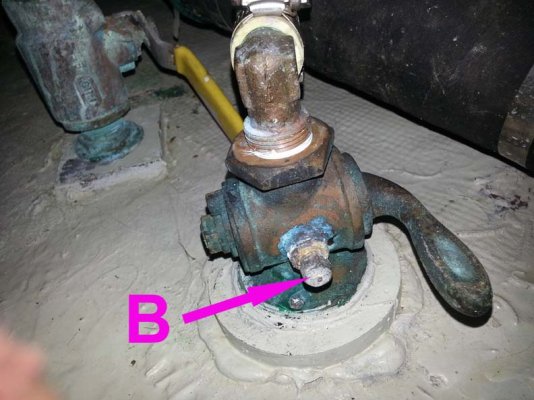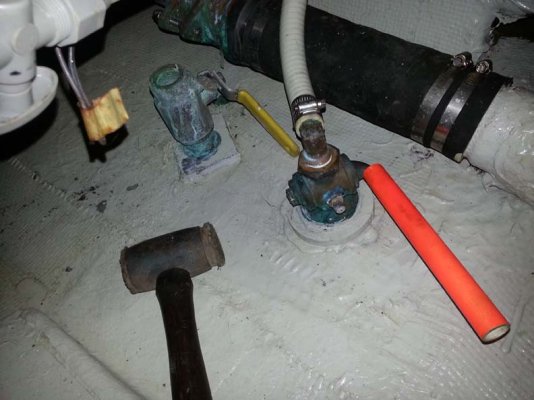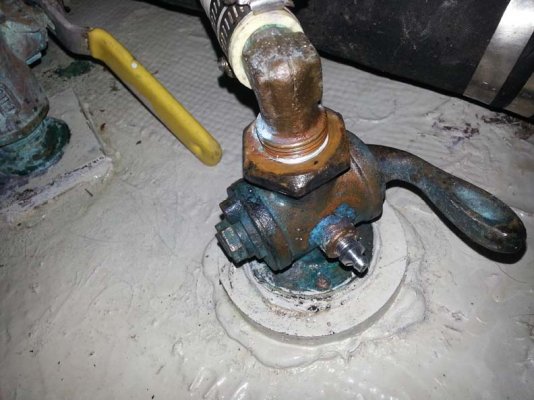Shoalwaters
Guru
- Joined
- Feb 24, 2008
- Messages
- 681
- Location
- St. Lucia, West Indies
- Vessel Name
- "Dragon Lady"
- Vessel Make
- DeFever 41
The pics below are of the small (1/2" - 3/4"?) seacock that supplies seawater to my aft head. I have not exercised it for the better part of a year and it now refuses to budge. I could apply mucho leverage to the handle but that way leads to tears.
The plug appears to be tapered. Can I slacken nut "A" about 1/4 turn and tap "axially" with a soft-faced mallet to loosen the plug in its barrel?
A search of the forum suggests that "B" might be a drain. I am not familliar with these - can I replace it with a grease nipple? If so, can I do the replacement with the boat in the water?
At next haul out I will remove and service the seacock properly, but for now I just want the head to work.
If anyone reckognises the make, I would be grateful for a scan of the service manual or whatever literature is available. This is original equipment in a 1984 DeFever.
Thanks in advance for the input.
The plug appears to be tapered. Can I slacken nut "A" about 1/4 turn and tap "axially" with a soft-faced mallet to loosen the plug in its barrel?
A search of the forum suggests that "B" might be a drain. I am not familliar with these - can I replace it with a grease nipple? If so, can I do the replacement with the boat in the water?
At next haul out I will remove and service the seacock properly, but for now I just want the head to work.
If anyone reckognises the make, I would be grateful for a scan of the service manual or whatever literature is available. This is original equipment in a 1984 DeFever.
Thanks in advance for the input.




